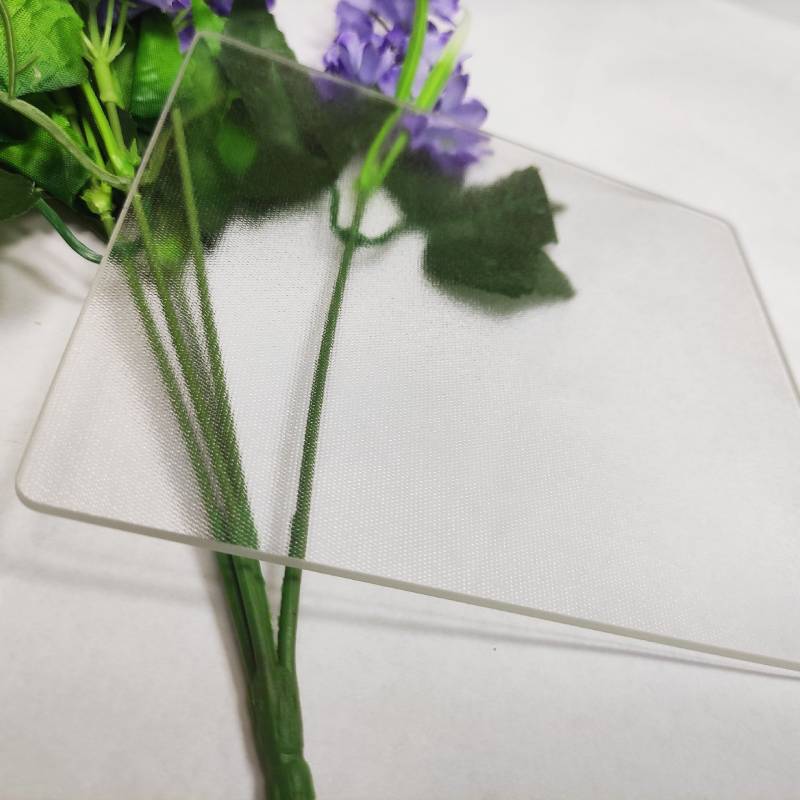The Art of Figured Glass Designs
Figured glass designs have captivated artists, architects, and enthusiasts alike for centuries. This unique form of glasswork, characterized by its textured surfaces and ornamental patterns, has evolved over time, marrying functionality with exquisite artistry. From the intricate designs of traditional stained glass to modern interpretations in contemporary architecture, figured glass designs serve as a testament to human creativity and craftsmanship.
Historical Context
The origins of figured glass can be traced back to ancient civilizations. The Egyptians and Romans mastered early glassmaking techniques, creating decorative items that often featured patterns and textures. However, it wasn't until the Middle Ages that figured glass truly flourished, particularly in the context of stained glass windows in cathedrals and churches across Europe. These windows were not merely ornamental; they played an essential role in storytelling, illuminating biblical narratives and infusing sacred spaces with divine light.
The techniques for creating figured glass evolved dramatically during the Renaissance. Artists such as Andrea Mantegna and later, the glassblowers of Venice, began to explore complex designs that incorporated vibrant colors and intricate motifs. This period marked the transition from utilitarian glassware to art pieces, setting the stage for future innovations in glass design.
Techniques and Styles
Figured glass design encompasses a variety of styles and techniques. One of the most prominent methods is the use of molds to create textured surfaces. Techniques like french pattern or rock crystal involve pressing molten glass into engraved molds, resulting in a patterned surface that catches and refracts light beautifully. This method is often used in decorative glass panels, tabletops, and light fixtures, adding a tactile dimension to the aesthetic appeal.
Another popular technique is the use of etching and engraving. Artists use various tools to carve intricate designs onto the glass surface, creating a visual depth that enhances the overall effect. This method allows for a high level of customization, making it a favorite among artisans who want to create bespoke pieces for specific clients.
One of the most noteworthy aspects of figured glass is its versatility. It can be adapted to various styles, from the intricate Art Nouveau designs of the early 20th century to the minimalist aesthetics favored in contemporary architecture. Each era has interpreted figured glass through its cultural lens, resulting in diverse applications that range from residential homes to public installations.
figured glass designs
Contemporary Applications
In modern times, figured glass designs have found new life in architecture and interior design. Architects like Frank Gehry and Tadao Ando have incorporated textured glass elements into their building designs to enhance light diffusion and create dynamic spaces. The use of figured glass can be seen in facades, partition walls, and even furniture, where it serves both functional and artistic purposes.
Furthermore, the trend towards sustainable design has led to the increased use of recycled and eco-friendly glass in figured designs. Artists and designers are being challenged to create pieces that are not only visually stunning but also environmentally responsible. This shift has sparked a resurgence of interest in traditional glassmaking techniques, as artisans seek to combine age-old craftsmanship with modern sustainable practices.
The Future of Figured Glass Designs
As technology advances, the future of figured glass designs looks promising. Innovations in digital printing and fabrication techniques leave the door open for limitless creativity. Artists can explore intricate and complex designs that were once impossible to produce, further blurring the lines between fine art and functional design.
In education, there’s a growing interest in glassblowing and design programs, fostering a new generation of artisans skilled in the techniques necessary to create beautiful figured glass works. Workshops and courses dedicated to this craft are popping up worldwide, ensuring that the rich tradition of glassmaking continues to thrive.
Conclusion
Figured glass designs represent a beautiful intersection of art, history, and technology. From their historical roots in ancient craftsmanship to their contemporary applications in architecture and design, these glassworks continue to inspire and delight. As we look to the future, it is clear that figured glass will remain a vital and evolving medium, reflecting the times while celebrating the timeless beauty of this extraordinary material.
 Afrikaans
Afrikaans  Albanian
Albanian  Amharic
Amharic  Arabic
Arabic  Armenian
Armenian  Azerbaijani
Azerbaijani  Basque
Basque  Belarusian
Belarusian  Bengali
Bengali  Bosnian
Bosnian  Bulgarian
Bulgarian  Catalan
Catalan  Cebuano
Cebuano  Corsican
Corsican  Croatian
Croatian  Czech
Czech  Danish
Danish  Dutch
Dutch  English
English  Esperanto
Esperanto  Estonian
Estonian  Finnish
Finnish  French
French  Frisian
Frisian  Galician
Galician  Georgian
Georgian  German
German  Greek
Greek  Gujarati
Gujarati  Haitian Creole
Haitian Creole  hausa
hausa  hawaiian
hawaiian  Hebrew
Hebrew  Hindi
Hindi  Miao
Miao  Hungarian
Hungarian  Icelandic
Icelandic  igbo
igbo  Indonesian
Indonesian  irish
irish  Italian
Italian  Japanese
Japanese  Javanese
Javanese  Kannada
Kannada  kazakh
kazakh  Khmer
Khmer  Rwandese
Rwandese  Korean
Korean  Kurdish
Kurdish  Kyrgyz
Kyrgyz  Lao
Lao  Latin
Latin  Latvian
Latvian  Lithuanian
Lithuanian  Luxembourgish
Luxembourgish  Macedonian
Macedonian  Malgashi
Malgashi  Malay
Malay  Malayalam
Malayalam  Maltese
Maltese  Maori
Maori  Marathi
Marathi  Mongolian
Mongolian  Myanmar
Myanmar  Nepali
Nepali  Norwegian
Norwegian  Norwegian
Norwegian  Occitan
Occitan  Pashto
Pashto  Persian
Persian  Polish
Polish  Portuguese
Portuguese  Punjabi
Punjabi  Romanian
Romanian  Russian
Russian  Samoan
Samoan  Scottish Gaelic
Scottish Gaelic  Serbian
Serbian  Sesotho
Sesotho  Shona
Shona  Sindhi
Sindhi  Sinhala
Sinhala  Slovak
Slovak  Slovenian
Slovenian  Somali
Somali  Spanish
Spanish  Sundanese
Sundanese  Swahili
Swahili  Swedish
Swedish  Tagalog
Tagalog  Tajik
Tajik  Tamil
Tamil  Tatar
Tatar  Telugu
Telugu  Thai
Thai  Turkish
Turkish  Turkmen
Turkmen  Ukrainian
Ukrainian  Urdu
Urdu  Uighur
Uighur  Uzbek
Uzbek  Vietnamese
Vietnamese  Welsh
Welsh  Bantu
Bantu  Yiddish
Yiddish  Yoruba
Yoruba  Zulu
Zulu 

